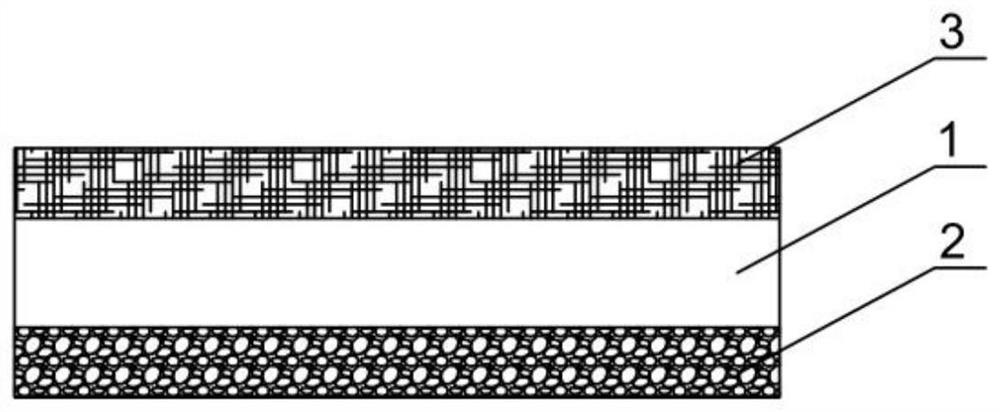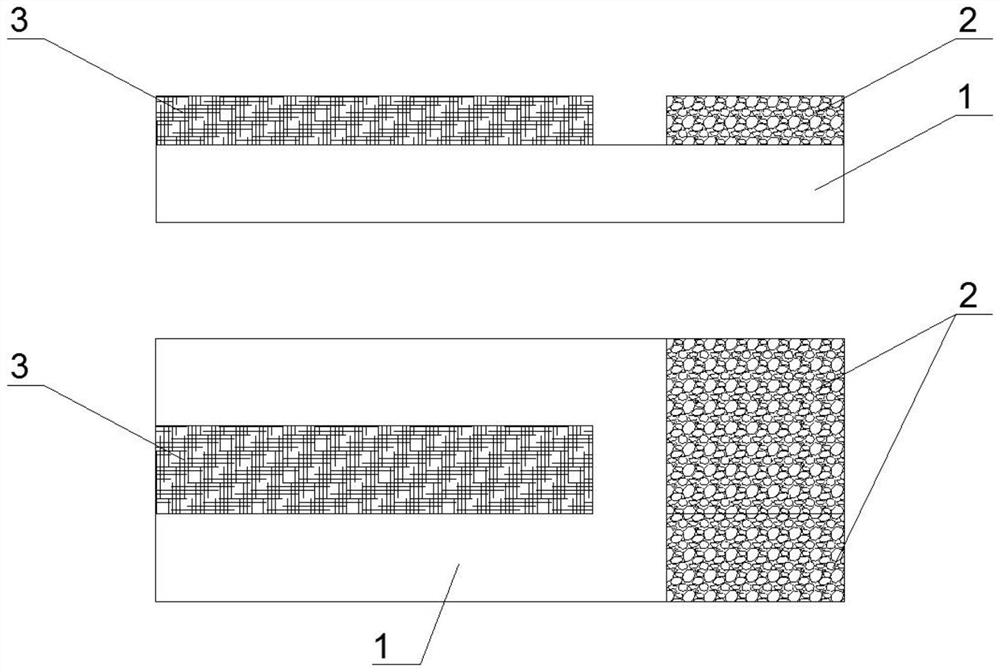A biosensor for detecting organophosphorus pesticides and its preparation method
A technology of biosensors and organophosphorus pesticides, which is applied in the direction of instruments, measuring devices, scientific instruments, etc., can solve the problems of affecting sensor sensitivity, small detection range, and low sensitivity, and achieve the goal of improving fixation efficiency, amplifying electrical signals, and improving sensitivity Effect
- Summary
- Abstract
- Description
- Claims
- Application Information
AI Technical Summary
Problems solved by technology
Method used
Image
Examples
preparation example Construction
[0028] The invention provides the preparation method of the biosensor, which comprises the following steps: after cleaning the electrode base sheet, fixing conductive materials and acetylcholinesterase at different positions of the electrode base sheet.
[0029] In the present invention, the cleaning preferably includes acetone cleaning, absolute ethanol cleaning and deionized water ultrasonic cleaning carried out in sequence; the time for the acetone cleaning, absolute ethanol cleaning, and deionized water cleaning is preferably 5 min respectively; A drying step is also preferably included after the cleaning. In the present invention, the drying is preferably nitrogen blowing.
[0030] In the present invention, when the conductive material and acetylcholinesterase are fixed on both sides of the electrode base sheet respectively, in a specific embodiment of the present invention, silver nanowires are sequentially added dropwise on one side of the electrode base sheet Solution...
Embodiment 1
[0039] (1) The glass sheet is cleaned with acetone, absolute ethanol, and deionized water ultrasonically, and blown dry with nitrogen;
[0040] (2) Add 4 μL of silver nanowire solution and 4 μL of graphene solution dropwise to one side of the glass plate, and then vacuum dry for 20 minutes;
[0041] (3) On the other side of the glass slide, 4 μL of titanium oxide, 4 μL of 5 wt % CS and acetylcholinesterase solution were added dropwise in sequence, and dried in the air to obtain a sensor detection electrode.
[0042] The detection electrode is placed in an electrochemical workstation for detection.
Embodiment 2
[0044] (1) Ultrasonic cleaning of the purchased double-sided conductive glass ITO with acetone, absolute ethanol, and deionized water for 5 minutes respectively; after cleaning, blow dry with nitrogen.
[0045] (2) 4 μL of silver nanowire solution and 4 μL of graphene solution were sequentially added dropwise to the conductive surface on one side of the glass plate, and then vacuum dried for 20 min.
[0046] (3) Electroplating a CS layer on the other conductive surface, in 0.2wt% CS solution, voltage -2.5V, time 20s.
[0047] (4) Add 4 μL ChE solution (in PBS buffer, containing
[0048] 1% bovine serum albumin), air-dried, and stored at 4°C.
PUM
| Property | Measurement | Unit |
|---|---|---|
| concentration | aaaaa | aaaaa |
| concentration | aaaaa | aaaaa |
| concentration | aaaaa | aaaaa |
Abstract
Description
Claims
Application Information
 Login to View More
Login to View More - R&D
- Intellectual Property
- Life Sciences
- Materials
- Tech Scout
- Unparalleled Data Quality
- Higher Quality Content
- 60% Fewer Hallucinations
Browse by: Latest US Patents, China's latest patents, Technical Efficacy Thesaurus, Application Domain, Technology Topic, Popular Technical Reports.
© 2025 PatSnap. All rights reserved.Legal|Privacy policy|Modern Slavery Act Transparency Statement|Sitemap|About US| Contact US: help@patsnap.com



